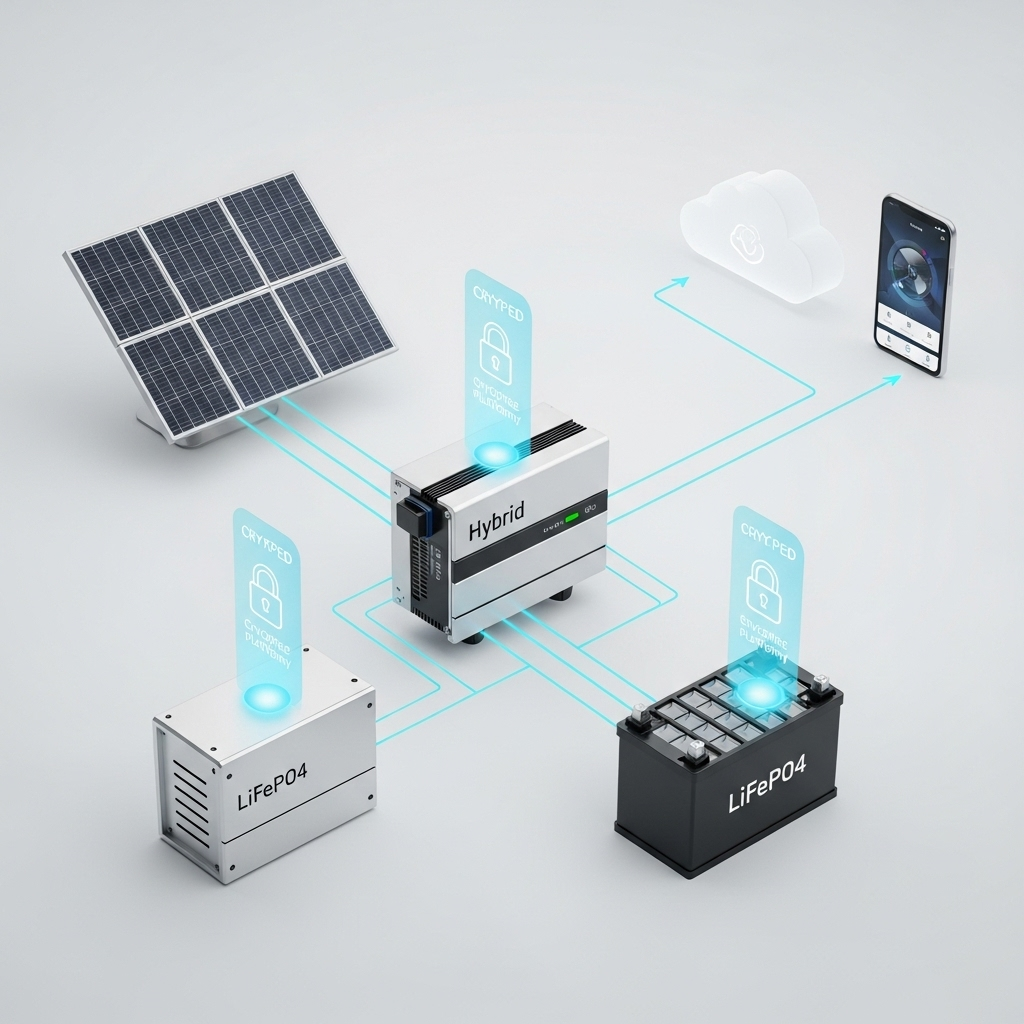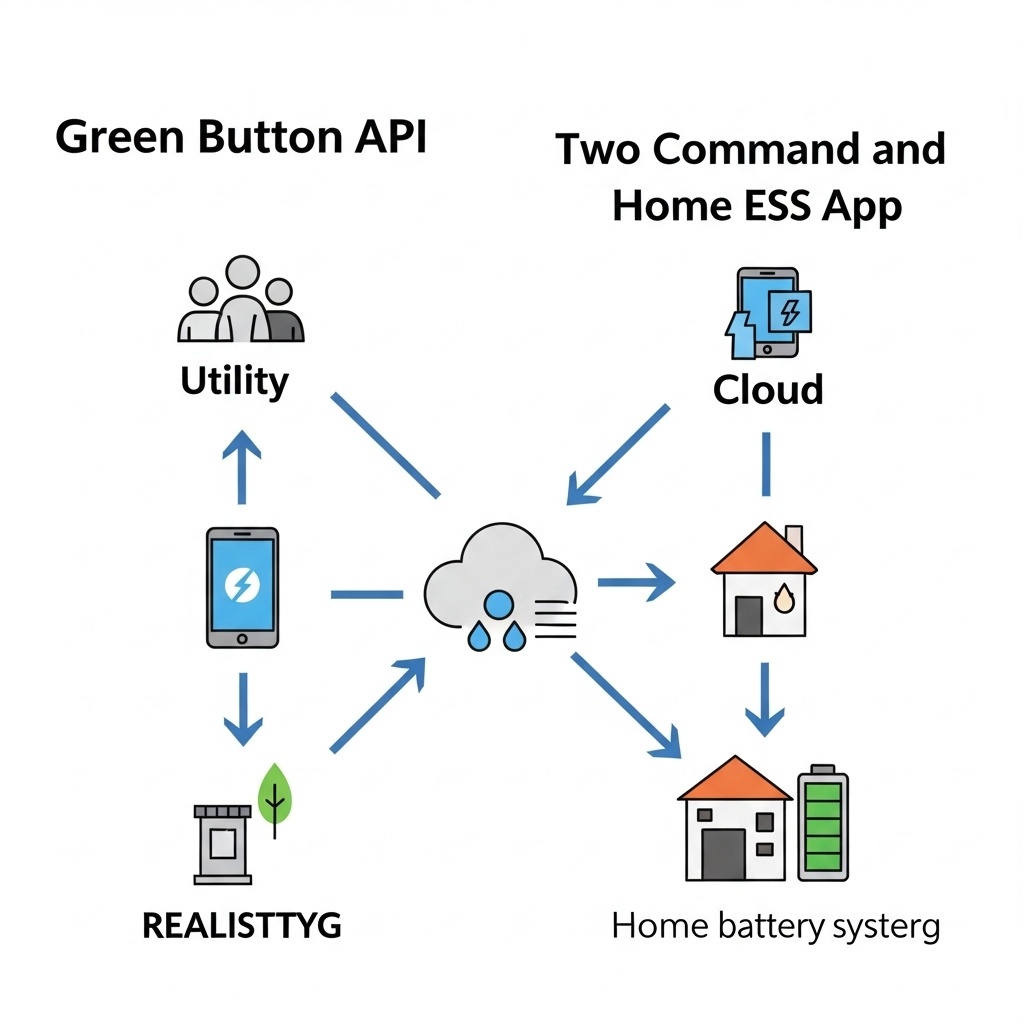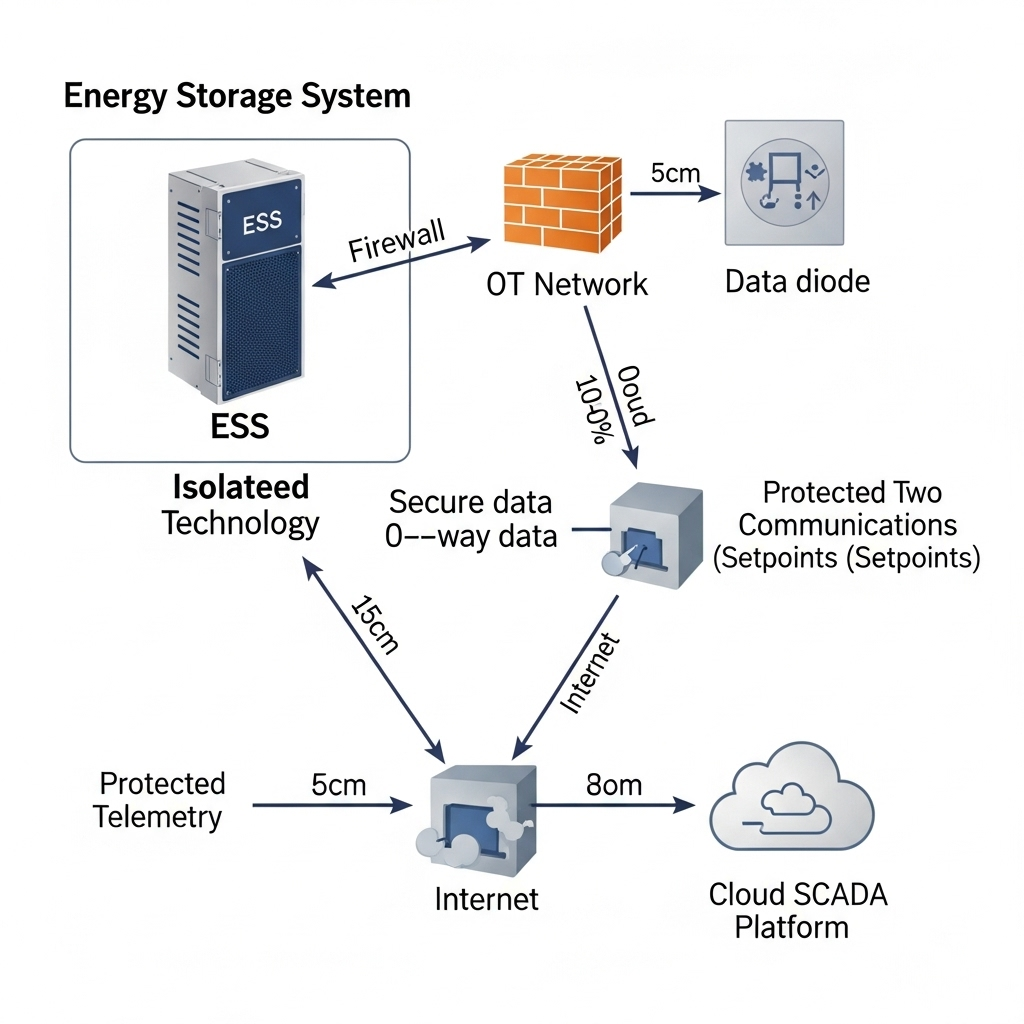Modern solar and energy storage systems are no longer isolated islands of power. They are intelligent, connected devices that offer unprecedented control and monitoring capabilities. This digital transformation, however, introduces new risks. Securing the communication channels between solar inverters and Energy Storage Systems (ESS) is fundamental to protecting your investment, ensuring grid stability, and maintaining your energy independence. This text provides a comprehensive look at the threats and the essential strategies to safeguard your energy assets.
The Evolving Threat Landscape for Solar and Storage
The transition from simple hardware to networked energy resources has fundamentally changed how we manage power. With remote access comes the potential for unauthorized interference. Understanding the vulnerabilities is the first step toward building a resilient system.
From Isolated Hardware to Networked Assets
In the past, most solar installations were "air-gapped," meaning they had no connection to the outside world. Today, real-time, internet-based communication is increasingly common for system operation, control, and monitoring. This connectivity allows for powerful features like remote diagnostics and performance optimization. It also creates entry points for digital threats that did not exist before. Every connected device, from the inverter to the battery management system, becomes a potential node in a larger network that needs protection.
Common Attack Vectors in Energy Systems
The ways a system can be compromised are varied. Attackers might attempt to intercept data between your inverter and ESS, an action known as a "man-in-the-middle" attack. They could try to push malicious firmware updates to take control of a device or launch a denial-of-service (DoS) attack to shut it down. Data spoofing, where false information is sent to the system controller, can cause incorrect operational decisions, potentially damaging hardware or destabilizing a local grid connection. Recognizing these varied threats is key to developing a robust defense. You can learn more about how to identify a coordinated attack in 7 Signals Your Inverter Fleet Is Under Coordinated Cyberattack.
The Real-World Impact of a Breach
A successful cyberattack is more than a simple IT issue. For an energy system, it can have severe physical consequences. An attacker could manipulate an inverter's output, potentially damaging appliances or destabilizing a microgrid. They could disable a battery system during a critical outage or access sensitive user data. In large-scale scenarios, coordinated attacks on thousands of Distributed Energy Resources (DERs) could threaten the stability of the entire power grid. The stakes are high, making proactive security measures non-negotiable.
Core Principles of Secure Inverter and ESS Communication
A secure energy system is built on a foundation of established cybersecurity principles. These concepts are not just for IT departments; they are directly applicable to the hardware that powers your home or business.
Authentication and Authorization: Who Are You and What Can You Do?
The first line of defense is ensuring that only legitimate users and devices can access your system. Authentication is the process of verifying identity. Authorization defines what an authenticated user or device is allowed to do. A major vulnerability in many systems is the use of default, easily guessable passwords. Strong password management and unique credentials for each device are critical. This helps enforce the "least-privilege" rule, where each component only has the access it absolutely needs to function. For a deeper look at this, see Stop Default Passwords: Hardening Modbus/SunSpec in ESS Networks.
Encryption and Data Integrity: Keeping Communication Private and Unaltered
All data transmitted between the inverter, the ESS, and any monitoring platform must be encrypted. Encryption scrambles the data, making it unreadable to anyone who intercepts it. Using robust protocols like Transport Layer Security (TLS) ensures not only confidentiality through encryption but also authentication and data integrity. This protects against eavesdropping and ensures that the commands sent and the data received have not been tampered with during transit.
The Zero Trust Architecture Model
Traditional security models often trusted any device inside the local network. A Zero Trust Architecture operates on a simple but powerful premise: never trust, always verify. It assumes that the network is potentially compromised and requires strict identity verification for every device and user trying to access resources. This approach is particularly well-suited for DERs, which are often physically dispersed and connect over various networks. Implementing a zero-trust framework is a practical step toward securing fleets of inverters and storage systems. You can find a detailed plan in Zero Trust for DER: A Practical Roadmap for Inverter-ESS Fleets.
Practical Security Measures for Your System
Applying security principles requires concrete actions in how systems are designed, installed, and maintained. From network setup to update procedures, every step matters.
Secure Network Design and Segmentation
Proper network architecture can significantly limit the potential damage from a breach. It is advisable to segment your energy system network from other less secure networks, like guest Wi-Fi. This isolation prevents an issue in one area from spreading to critical energy infrastructure. For high-security sites, specialized hardware like data diodes can be used to ensure that data can only flow in one direction, preventing any external commands from reaching the equipment. Explore the differences in Data Diodes vs Firewalls: One-Way Telemetry for Solar Sites.
The Critical Role of Secure Firmware Updates
Firmware is the software that runs on your inverter and ESS hardware. Updates are necessary to add features and patch newly discovered security holes. However, the update process itself is a potential attack vector. A secure system must verify the authenticity and integrity of any firmware file before installation. The ability to perform a "rollback" to a previous trusted version is also an important recovery feature in case a malicious update is pushed. Secure Over-the-Air (OTA) update mechanisms are crucial for maintaining a system's security over its lifespan. Learn how to secure this process in How to Harden OTA Updates for Solar Inverters and Home ESS.
Choosing Secure Communication Protocols
Not all communication protocols are created equal. Older industrial protocols were often designed without security in mind. When selecting equipment, it's important to understand the protocols used for telemetry and control. Modern standards like IEC 61850 and secure implementations of MQTT are becoming more common for a reason. They provide the robust framework needed for secure and vendor-agnostic communication, which is especially important for large-scale systems like Virtual Power Plants (VPPs). For more on this, check out 9 Critical Protocol Choices to Secure Inverter and ESS Telemetry and Vendor-Agnostic IEC 61850/MQTT Patterns for Secure VPP Telemetry.
Interoperability, Grid Codes, and Future-Proofing
As energy systems become more integrated with the grid and with each other, standardization and regulatory compliance become central to security.
Balancing Security with Interoperability
Interoperability—the ability of devices from different manufacturers to work together seamlessly—is a key goal for the industry. However, it can also create security challenges. A system is only as strong as its weakest link. Using pre-integrated solutions, such as a home energy storage system that combines a high-performance LiFePO4 battery and a hybrid inverter from a single, experienced manufacturer, can help close these security gaps. A well-designed, integrated system ensures that all components are built to communicate securely from the ground up. You can find a complete guide on this topic at Ultimate Guide: Secure Inverter-ESS Links with Interoperability.
What Modern Grid Codes Demand
Grid operators and regulators are increasingly aware of cybersecurity risks. As a result, new grid codes are being developed that mandate specific security functionalities for any system connecting to the grid. These codes often specify requirements for communication interfaces, remote controllability, and data protection. Adhering to these standards is no longer optional; it is a requirement for participation in modern energy markets. For a detailed breakdown, see What Grid Codes Demand from Secure Inverter Communications Today.
The Rise of Secure Microgrids and VPPs
Advanced energy applications like microgrids and VPPs rely heavily on fast, reliable, and secure communication. A microgrid's ability to perform a "black start"—restarting a section of the grid without help from the main grid—is entirely dependent on secure, resilient communication links between its assets. Cybersecurity is the enabling technology that allows these sophisticated, multi-asset systems to operate reliably and provide critical grid services. The Department of Energy has supported projects proving this capability, as detailed in Case Study: DOE-Backed Microgrids Prove Cyber-Secure Blackstart.
Moving Forward with Confidence in Your Energy System
Securing the communication links in your solar and storage system is not an optional add-on; it is a core component of a reliable and resilient energy solution. From authentication and encryption to secure network design and adherence to grid codes, a multi-layered approach is the only effective strategy.
As a company with years of experience in the solar industry, we have seen the evolution from simple off-grid setups to complex, grid-interactive systems. Our focus on manufacturing reliable LiFePO4 batteries and developing integrated ESS solutions is driven by the understanding that performance and security are two sides of the same coin. A system that is digitally secure is better able to deliver the power you need, when you need it. By choosing proven, high-quality components and following security best practices, you can confidently achieve your goal of energy independence.
Disclaimer: This article is for informational purposes only and does not constitute legal or investment advice. Always consult with a qualified professional for your specific needs.





Leave a comment
All comments are moderated before being published.
This site is protected by hCaptcha and the hCaptcha Privacy Policy and Terms of Service apply.